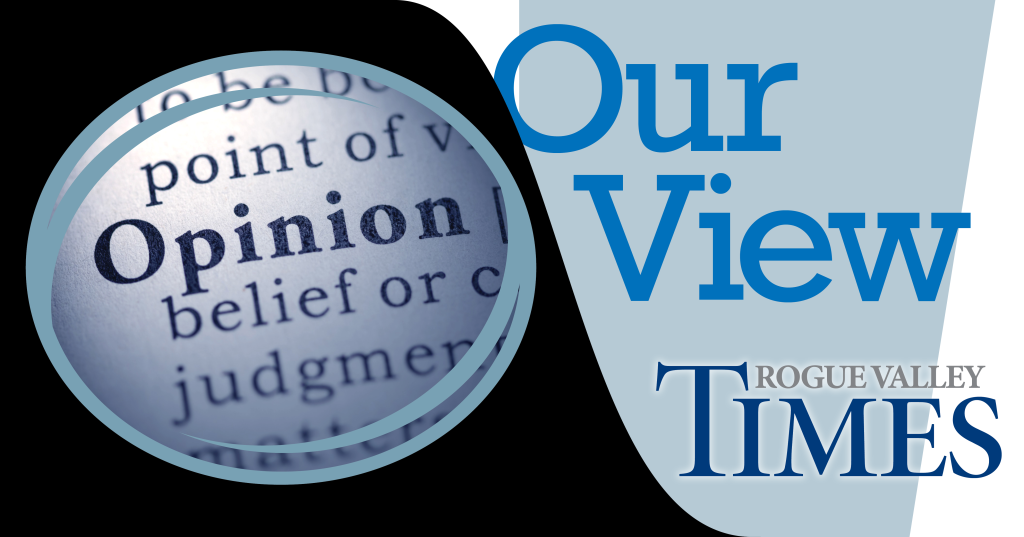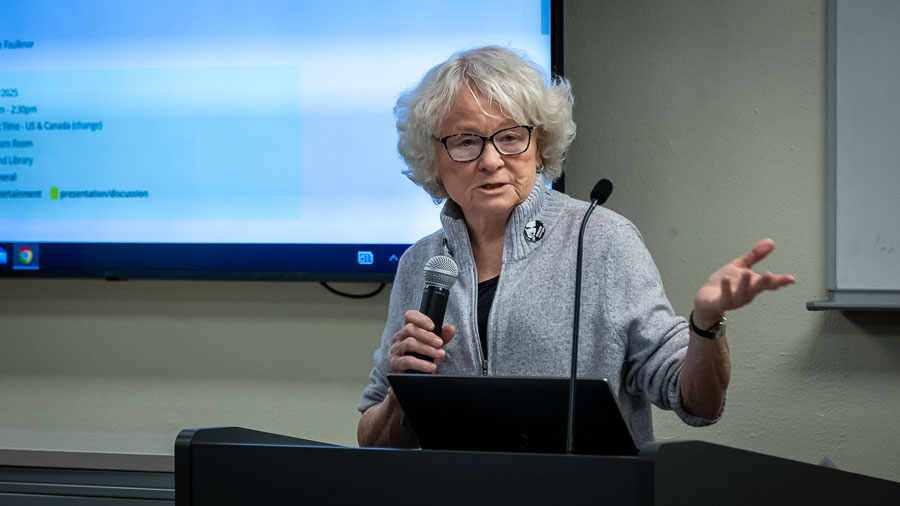OUR VIEW: SOU paints an ambitious picture for strengthening its financial future
Published 5:15 am Saturday, December 16, 2023

- OUR VIEW LOGO (NEW)
Southern Oregon University went into the final days of 2022 in a funk of quiet desperation — with an underwater budget and enrollment issues that threatened to send it into depths from which recovery seemed, if not unimaginable, then certainly beyond the foreseeable future.
Cut to a year later, and the outlook shows signs of cautious optimism.
That was the message SOU President Rick Bailey delivered recently to The Chamber of Medford & Jackson County — in a presentation that depicted the university as one ready to employ “Adaptation, Collaboration & Creative Solutions” to continue its emergence from darker times.
Bailey cited improving numbers regarding student enrollment and retention, a clearer path to financial stability over the next five academic years, and innovative projects that would diversify sustainable revenue streams while simultaneously establishing SOU as a university willing to think outside the traditional academic boxes.
It has not, as anyone with a vested interest in the school would attest, been a smooth or easy path to get this far.
Just months after the Board of Trustees gave their consent to a euphemistically named “Strategic Realignment Plan” — one which included tuition increases, staffing cuts to stabilize its fiscal foundation — the university stubbed its toe when it came to light this summer that $1 million in what where deemed accounting errors forced budget recalculations and a review of its procedures.
In his presentation to the Chamber, though, Bailey, who is approaching two years since his appointment in January 2022, cited “careful but optimistic progress” on the financial front.
Whereas before the implementation of its multi-pronged “SOU Forward” plan, projections were for a continued downward spiral that would see a $14.6 million deficit by the 2026-27, the outlook is considerably brighter.
With savings, drawing-board projects as well as grants and philanthropy efforts, the economic turnaround could reach a projected $3.2 million surplus over that same time period.
Bailey’s projections also are impacted by strengthening enrollment and retention, as well as a state-supported solar energy project that, when complete, could supply 100% of SOU’s daytime energy needs.
Infrastructure alone, however, will not be enough to sustain long-term viability, which is why Bailey stressed reversing the declining trends of enrollment and student retention.
In comparison to the fall semester of a year ago, SOU has seen 15.9% increase in first-year students, a 10% increase in those transferring from other institutions, along with increases in retention rates across the board.
Part of this, as he said in a video message to the university last month, is the result of both a data-drive analytical approach to recruitment as well as SOU representatives visiting high schools across the state to share what the university has to offer.
“We can already see that (these methods) are bearing fruit,” Bailey said in the video message, “because there are students who otherwise wouldn’t be on our radar that this outreach is now bringing to SOU.”
Along with the solar project, the innovative approaches being adopted by SOU include a plan to tear down a former dormitory and build what would be a residential complex targeted for senior citizens, presumably those whose proximity to the university would allow them to participate in the educational experience, as well as the construction of a “student-friendly” housing and business complex that would not only generate revenue but act as an enticement to draw and retain students.
There are plenty of reasons to be hopeful with each and every one of these plans. Given where SOU’s fortunes stood a year ago at this time, the scope of this ambition not only bears watching, but should be applauded.










